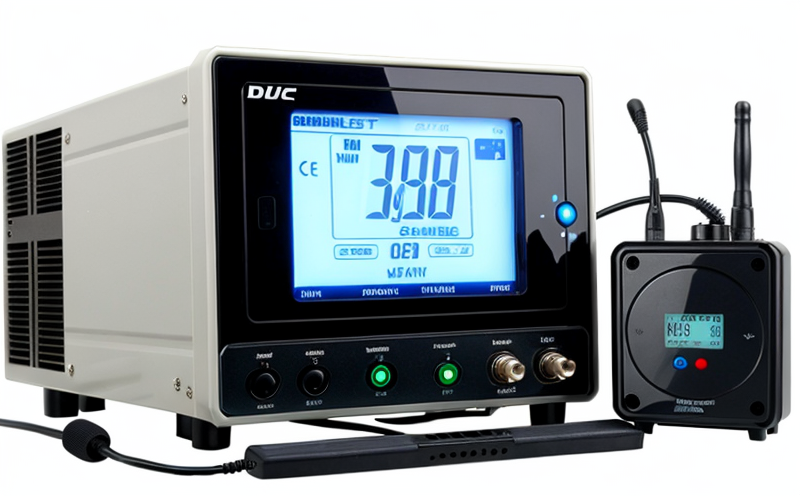JIS C 61000 RF Compatibility Testing for Wireless Devices
The JIS C 61000 series of standards is essential to ensure that wireless devices and systems comply with electromagnetic compatibility (EMC) requirements. This specific test, JIS C 61000-4-3, focuses on the measurement of radio frequency (RF) interference emissions from wireless devices within a specified frequency range.
Wireless communication has become an integral part of modern technology, powering everything from smartphones to smart home devices. However, these devices can generate electromagnetic interference that affects other electronic equipment and systems. JIS C 61000-4-3 provides a standardized method for assessing the RF emissions of wireless devices, ensuring they do not interfere with the operation of other sensitive equipment.
The test is crucial in various sectors, including telecommunications, consumer electronics, automotive, and industrial manufacturing. By adhering to JIS C 61000-4-3 standards, manufacturers can ensure their products meet regulatory requirements and perform reliably in real-world environments. This testing helps prevent potential issues that could arise from electromagnetic interference, such as signal distortion or device malfunctions.
The test procedure involves subjecting the wireless device to a controlled RF environment while measuring its emissions within specific frequency bands. The measurement equipment used typically includes an antenna, spectrum analyzer, and other necessary instrumentation. The results are then compared against predefined limits specified in the JIS C 61000-4-3 standard.
The importance of this testing cannot be overstated, especially as wireless technology continues to evolve. As more devices incorporate RF capabilities, ensuring they meet EMC standards is becoming increasingly critical. This test not only protects sensitive equipment from interference but also enhances the overall performance and reliability of wireless systems.
Compliance with JIS C 61000-4-3 is essential for manufacturers to gain market access in Japan and ensure their products are reliable and safe for use. By adhering to these standards, businesses can avoid costly rework or recalls later in the product lifecycle.
Scope and Methodology
The scope of JIS C 61000-4-3 encompasses the measurement of radio frequency interference emissions from wireless devices. The standard applies to all types of wireless communication systems, including but not limited to:
- Mobile phones
- Wi-Fi routers and access points
- Bluetooth transmitters
- Smart home devices
The testing procedure involves several key steps:
| Step | Description |
|---|---|
| 1. Setup | Arrange the test environment to replicate real-world conditions, including background interference levels. |
| 2. Measurement | Subject the device to a controlled RF field and measure its emissions using specialized instrumentation. |
| 3. Comparison | Compare the measured values against the limits specified in JIS C 61000-4-3. |
| 4. Reporting | Document the results and provide a detailed report to the client. |
The test ensures that wireless devices meet the specified limits for RF emissions, thereby preventing interference with other electronic equipment. This standardized approach guarantees consistency and repeatability of results across different laboratories and testing facilities.
Why Choose This Test?
JIS C 61000-4-3 RF Compatibility Testing is critical for manufacturers aiming to ensure their wireless devices meet regulatory requirements and perform reliably in real-world environments. Here are some key reasons why this test is essential:
- Regulatory Compliance: Adhering to JIS C 61000-4-3 ensures that your products comply with Japanese standards, enabling market access.
- Reliability and Performance: By reducing interference from RF emissions, the test enhances the overall performance and reliability of wireless systems.
- Risk Mitigation: Ensures that potential issues related to electromagnetic interference are identified early in the product lifecycle, minimizing costly rework or recalls.
- Quality Assurance: Provides a standardized method for assessing RF emissions, ensuring consistency and repeatability of results across different laboratories.
- Customer Satisfaction: By delivering products that meet high standards, you can enhance customer satisfaction and trust in your brand.
- Competitive Advantage: Meeting rigorous standards like JIS C 61000-4-3 sets your company apart from competitors by demonstrating a commitment to quality and reliability.
In summary, JIS C 61000-4-3 RF Compatibility Testing is not just a requirement; it's an investment in the success of your wireless devices. By ensuring compliance with these standards, you can protect your products from interference, enhance their performance, and gain a competitive edge in the market.
Use Cases and Application Examples
- Smartphone Manufacturers: Ensure that new models comply with JIS C 61000-4-3 to prevent interference with other electronic devices.
- Wi-Fi Providers: Verify the compatibility of new routers and access points to ensure they do not generate excessive RF emissions.
- Automotive Industry: Test the RF compatibility of automotive electronics, such as infotainment systems and navigation devices, to prevent interference with other vehicle components.
- Consumer Electronics Manufacturers: Ensure that new smart home devices meet the specified limits for RF emissions to avoid interference issues.
- Telecommunications Companies: Validate the RF compatibility of base stations and repeaters to ensure they do not generate excessive interference.
- R&D Engineers: Use this test to evaluate new designs and innovations in wireless technology, ensuring they meet EMC standards before commercialization.
The JIS C 61000-4-3 RF Compatibility Test is essential for any organization involved in the design, development, or production of wireless devices. By incorporating this testing into your quality assurance process, you can ensure that your products perform reliably and meet regulatory requirements.





